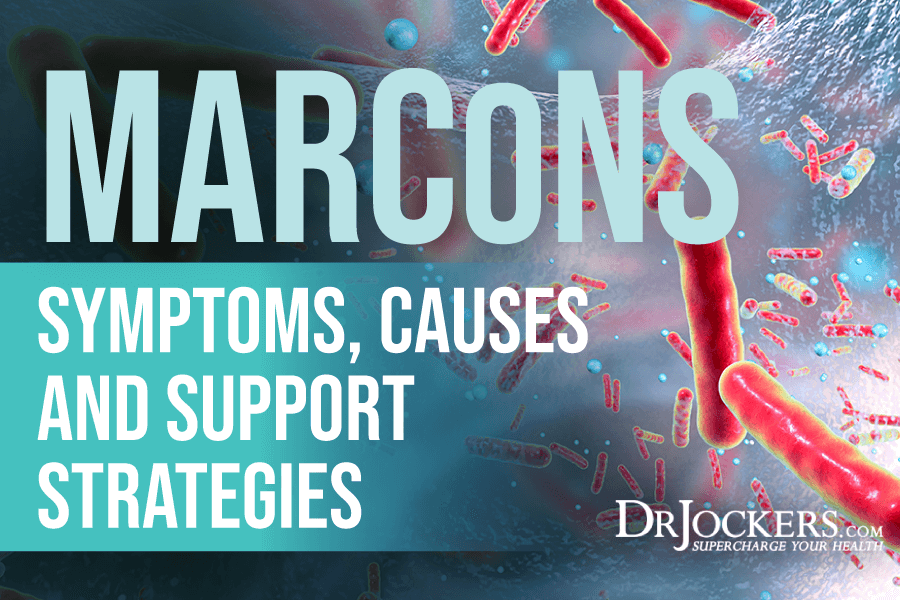 MARCoNS: Symptoms, Causes, and Support Strategies
MARCoNS: Symptoms, Causes, and Support Strategies
Have you heard about MARCoNS? Chances are, you haven’t. Yet, MARCoNS may be one of the culprits behind your chronic symptoms. MARCoNS are an antibiotic-resistant form of staph that can lead to an infection, overgrowth, and chronic health issues, including symptoms of chronic fatigue syndrome (CFS), fibromyalgia, multiple chemical sensitivity, chronic Lyme disease, multiple sclerosis (MS), lupus, and other autoimmune conditions. MARCoNS may also play a role in Chronic Inflammatory Response Syndrome (CIRS).
In this article, you will learn what MARCoNS are. You will learn about the symptoms of MARCoNS. I will go over the risk factors and causes of MARCoNS. You will understand the connection between MSH and MARCoNS. I will recommend some lab testing for diagnosing MARCoNS and understanding some related health factors. Finally, I will offer some natural support strategies to improve your health.

What is MARCoNS
MARCoNS stand for multiple antibiotic resistant coagulase negative staph. It is a newly discovered and understood bacteria, an antibiotic-resistant form of staph MARCoNS can be found in your nasal cavity. MARCoNS itself is not an infection. However, colonization may lead to an infection, causing inflammation and health issues.
Pathogenic coagulase-negative Staphylococci bacteria may affect a variety of bodily functions. It releases bacterial toxins (exotoxins A and B) into your bloodstream that can negatively affect healthy cellular function. These toxins are made by harmful bacteria hiding in your nasal cavity that may increase inflammatory response and lead to health issues (1, 2).
The problem is when this bacteria can become antibiotic-resistant to several different antibiotics. This is where the term MARCoNS comes from. MARCoNS survives within biofilms and makes exotoxins that may harm your body.
Because it is protected by biofilms, MARCoNS is very difficult to treat. MARCoNS may play a role in the development and symptoms of chronic fatigue syndrome (CFS), fibromyalgia, multiple chemical sensitivity, chronic Lyme disease, multiple sclerosis (MS), lupus, and other autoimmune conditions. MARCoNS may also play a role in Chronic Inflammatory Response Syndrome (CIRS).

MARCoNS Symptoms
Symptoms of MARCoNS may be similar to various chronic health issues, including fibromyalgia and autoimmune problems. Symptoms of MARCoNS may include:
- Cough
- Fatigue
- Difficulty focusing and concentrating
- Memory issues
- Brain fog
- Headaches or migraines
- Joint pain
- Stiffness in the morning
- Facial and/or sinus pain
- Sinus congestion
- Tearing of the eyes
- Red eyes
- Sensitivity to eyes
- Shortness of breath
- Night sweats
- Temperature dysregulation
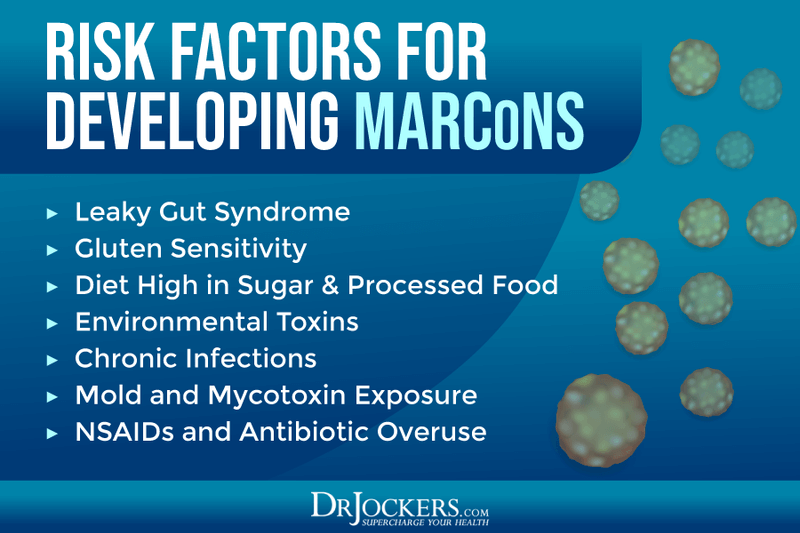
Risk Factors and Causes of MARCoNS
There are a variety of underlying health issues that may increase your risk of MARCoNS. Let’s look at these issues.
Leaky Gut Syndrome
In a healthy gut, your gut lining has tight junctions that only allow nutrients and important substances to pass into your bloodstream but stop any large food particles, pathogens, and toxins. Environmental toxins, inflammatory food, gut imbalance, stress, and other health, dietary, and lifestyle factors may damage the gut lining and increase the gap in the tight junctions. As a result, your gut becomes ‘leaky’ characterized by larger gaps that allow toxins, pathogens, and large food particles to pass into your bloodstream.
Leaky gut syndrome can lead to chronic inflammation and increase the risk of autoimmune conditions, insulin resistance, metabolic disease, and other health issues (3, 4, 5). According to a 2019 study published in Microbiome, leaky gut syndrome may increase the risk of infections, including staphylococcus infections (6).
However, according to a 2008 study published in the Journal of Investigative Dermatology, staph infections may also increase the risk of leaky gut syndrome (7). This may lead to a vicious cycle of leaky gut and infection, increasing the risk of MARCoNS.
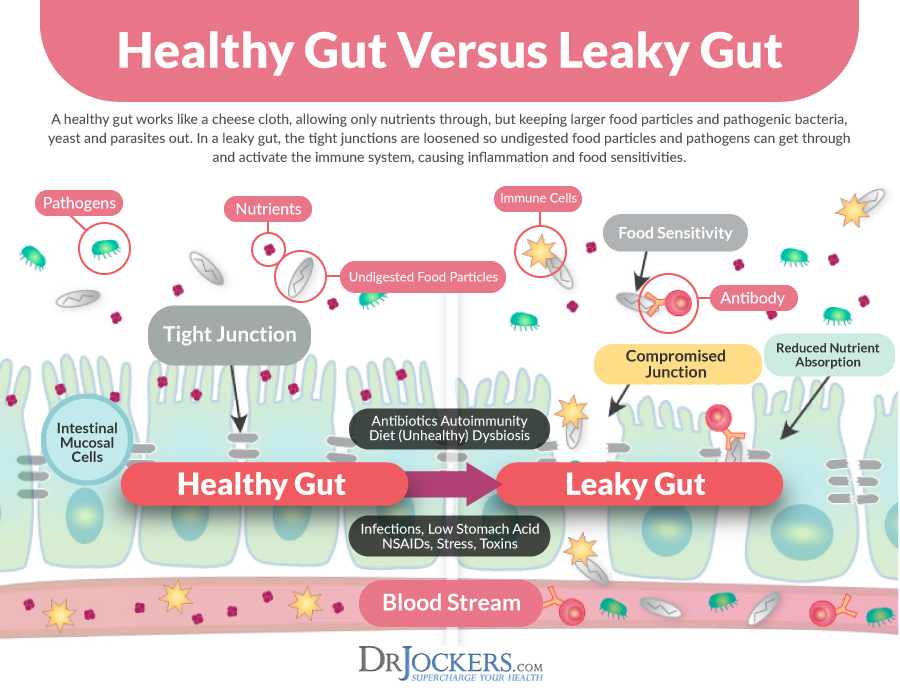
Gluten
Gluten is a protein in wheat and certain other grains, as well as food products made from their grains, including pasta, bread, pastry, cakes, and cookies. Gluten is a binding agent that offers shape, texture, and flavor to these foods. Unfortunately, gluten is also highly inflammatory.
People with Celiac disease have an immune reaction to gluten, causing autoimmune symptoms. However, gluten can cause inflammation, symptoms of food allergies and food sensitivities, and consequent health issues in people without Celiac as well.
According to a 2018 study published in Nature Communications, gluten may change the gut microbiome and lead to imbalances (8). It may increase the risk of leaky gut syndrome and infections.
According to a 2020 review published in Nutrients, a gluten-free diet may improve the health of the gut and gut microbiome (9). Since leaky gut syndrome and the risk of MARCoNS is connected, gluten may play a role as well, and removing gluten may help (6, 7).
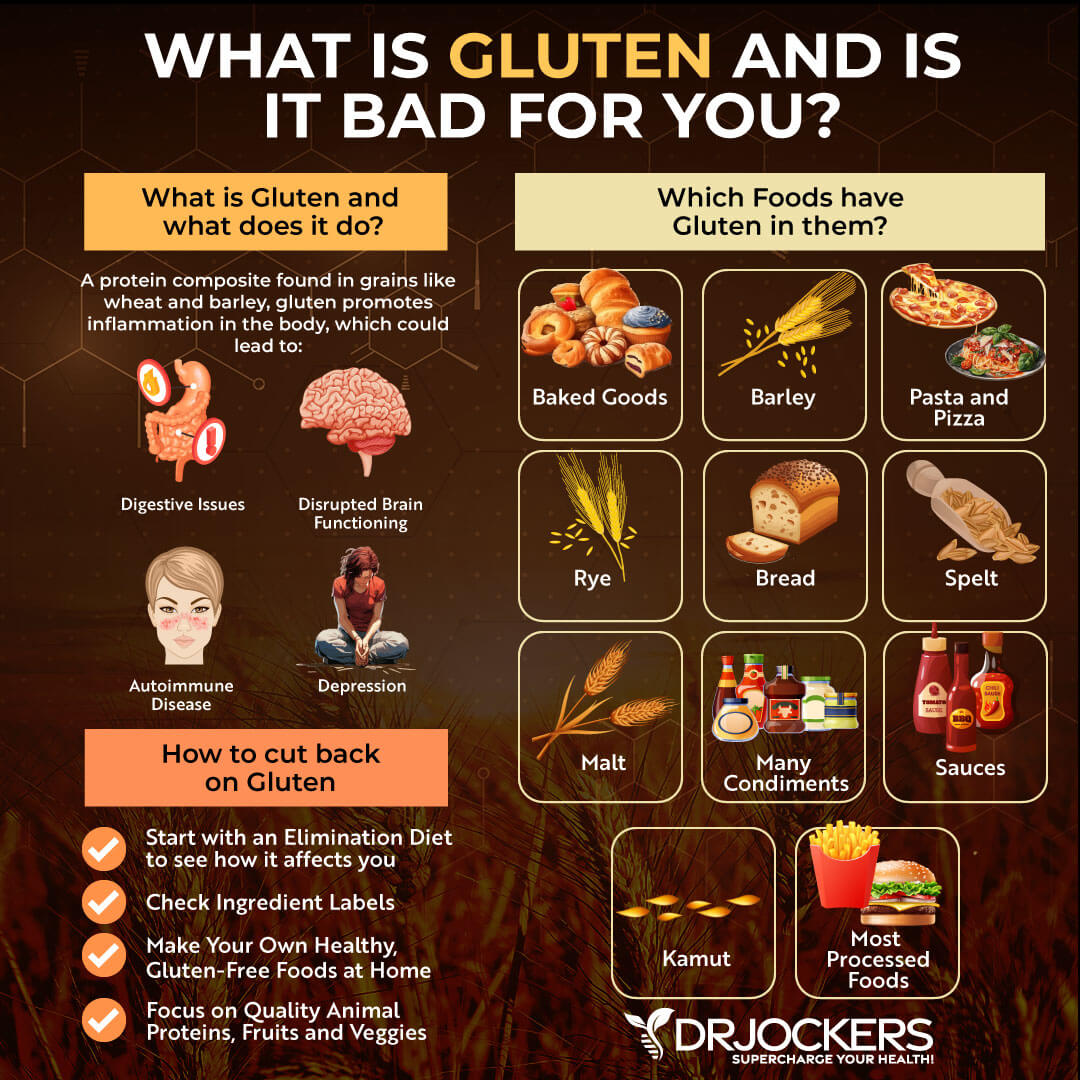
High Sugar Diet
Following a high sugar diet, especially a diet high in refined sugar and processed carbohydrates can increase the risk of chronic inflammation and gut health issues. According to a 2020 study published in Nutrients, a high sugar intake can increase the risk of gut health issues and inflammation (10).
Since leaky gut syndrome and the risk of MARCoNS is connected, a high sugar diet may play a role in MARCoNS (6, 7). A 2015 study published in mBio has found a connection between a toxic super antigen made by the staph bacteria and high blood glucose levels, insulin resistance, and widespread inflammation (11).
Processed Food
Following a highly processed, inflammatory diet may also increase the risk of MARCoNS. Refined sugar and processed carbs are not the only issues here. Artificial ingredients, emulsifiers, surfactants, commercial salt, and other unnatural ingredients in processed foods can increase the risk of leaky gut syndrome, inflammation, and infections.
Since leaky gut syndrome and the risk of MARCoNS is connected, a highly-processed inflammatory diet may play a role in the issue (6, 7). According to a 2021 study published in PLoS Pathogens, a processed food diet can increase the risk of chronic infections (12).

Chemicals, Pesticides, and Environmental Toxins
Environmental toxins, chemicals, pesticides, herbicides, and added hormones in our food can increase chronic inflammation, gut microbiome imbalance, leaky gut syndrome, chronic infections, and chronic health issues. A 2014 study published in Integrative Medicine (Encinitas) has found that toxins entering the circulation can lead to gut imbalance and leaky gut (13).
This can open the door to staph infections and MARCoNS (6, 7). According to a 2005 article published in the Journal of Experimental Medicine, toxins can compromise the immune system, which opens the door to chronic infections and bacterial issues, including MARCoNS (14).
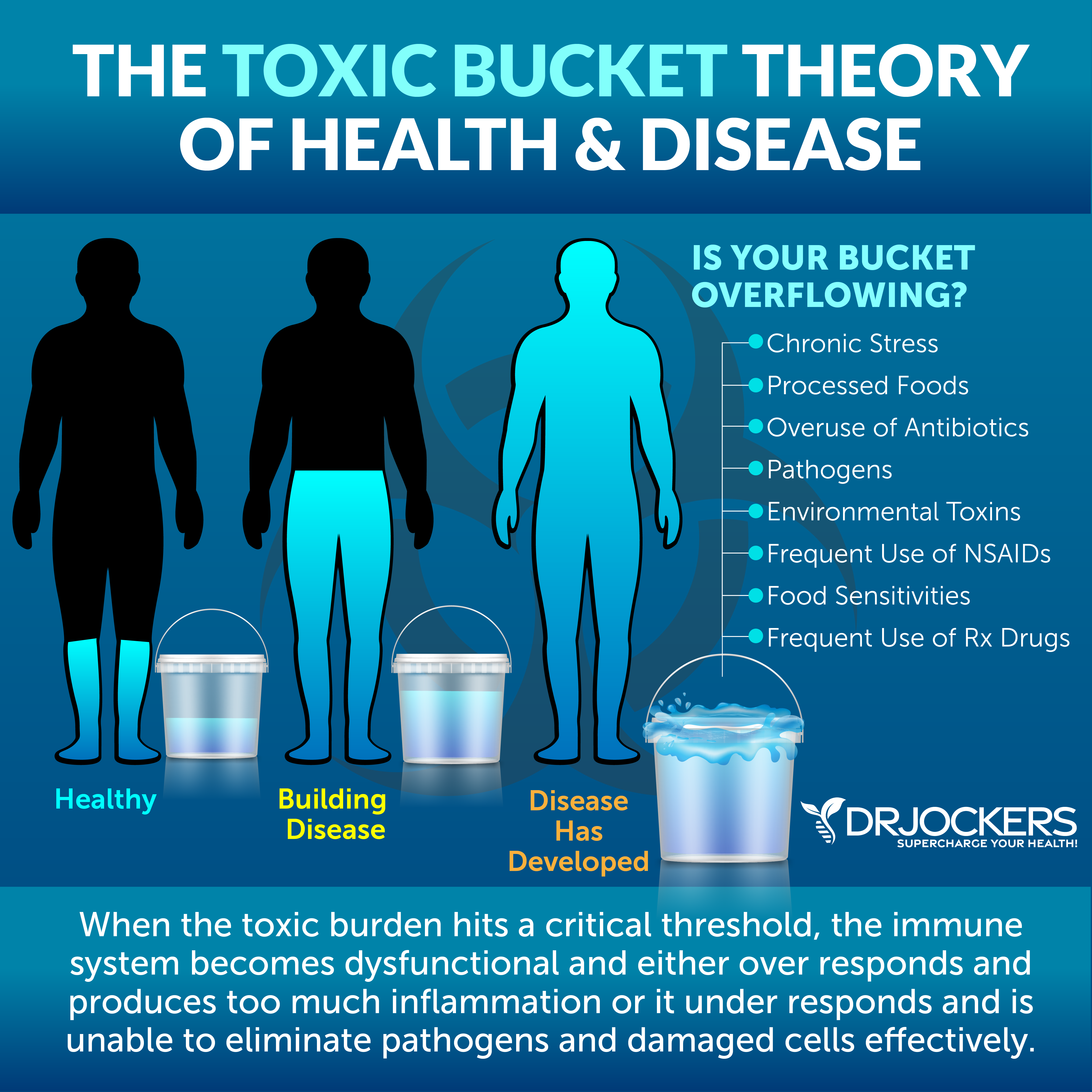
Mold
Mold exposure can lead to a long list of chronic symptoms and chronic health issues. Mold produces mycotoxins which are toxic byproducts that can compromise your immune system, cause microbiome imbalance, and increase chronic inflammation.
This environment is perfect for the staph bacteria to thrive and MARCoNS to develop (6, 7). A 2013 review published in Toxins (Basel) has found that mold mycotoxins is a common culprit behind various chronic symptoms and chronic illness, including symptoms connected to MARCoNS (15).

NSAIDS
Non-steroidal anti-inflammatory drugs (NSAIDs, including Aleve and ibuprofen, can cause issues when overused. According to a 2016 study published in Clinical Microbiology and Infection, NSAIDs use may increase the risk of gut microbiome imbalance and gut health issues (16).
According to a 2018 study published in FEMS Microbiology Letters, NSAIDs may also increase the risk of antibiotic resistance (17). The combination of these risks may open the door for MARCoNS to thrive (6, 7).

Overuse of Antibiotics
MARCoNS stand for multiple antibiotic resistant coagulase negative staph, which means that it’s connected to antibiotic resistance. Antibiotic overuse is a serious issue in the United States and much of the Western world. According to a 2015 article published in Pharmacy and Therapeutics, antibiotic overuse can increase the risk of antibiotic resistance (18).
According to a 2020 review published in Frontiers in Cellular and Infection Microbiology, antibiotics also disrupt the gut microbiome (19). This may increase the risk of gut health issues, leaky gut syndrome, and related issues. This can further open up the door to the risk of MARCoNS (6, 7).

MSH and MARCoNS
One way that MARCoNS affects the health of your intestinal barrier is by releasing toxins that reduce the production of a hormone called Melanocyte Stimulating Hormone (MSH). The MSH is made in your pituitary gland and plays a role in several health functions. It helps to control other hormones in your body.
It also plays a part in inflammatory and immune responses against various pathogens. According to a 2012 study published in Peptides and a 2020 study published in ACS Omega, MSH supports your body’s fight against MARCoNS by killing methicillin-resistant S. aureus (MRSA) (20, 21). MARCoNS infections can lead to low levels of MSH, which can lead to a vicious cycle of infection and symptoms.
Low levels of MSH may increase your risk of fungal infections related to mold exposure. Mold-related infections may lead to chronic symptoms, including chronic pain, chronic fatigue, insomnia, and sexual dysfunction. MSH plays an essential role in your intestinal health. It helps to process the protein gliadin in your gut. According to a 2017 study published in PLoS One, low levels of MSH may lead to inflammation and gaps in your gut lining (22).
Since gut health and leaky gut play such an important role in MSH levels and MARCoNS, addressing your microbiome health may be key to recovery. According to a 2018 review published in the Annals of Allergy, Asthma, and Immunology, your diet and food allergies for example, can deeply impact your gut microbiome and increase your risk of leaky gut syndrome (23).
However, before I get into how to address your gut health and other underlying issues behind low MSH levels and MARCoNs, I want to discuss some important lab testing options that can determine whether you are dealing with a MARCONS infection and looking for underlying health problems.
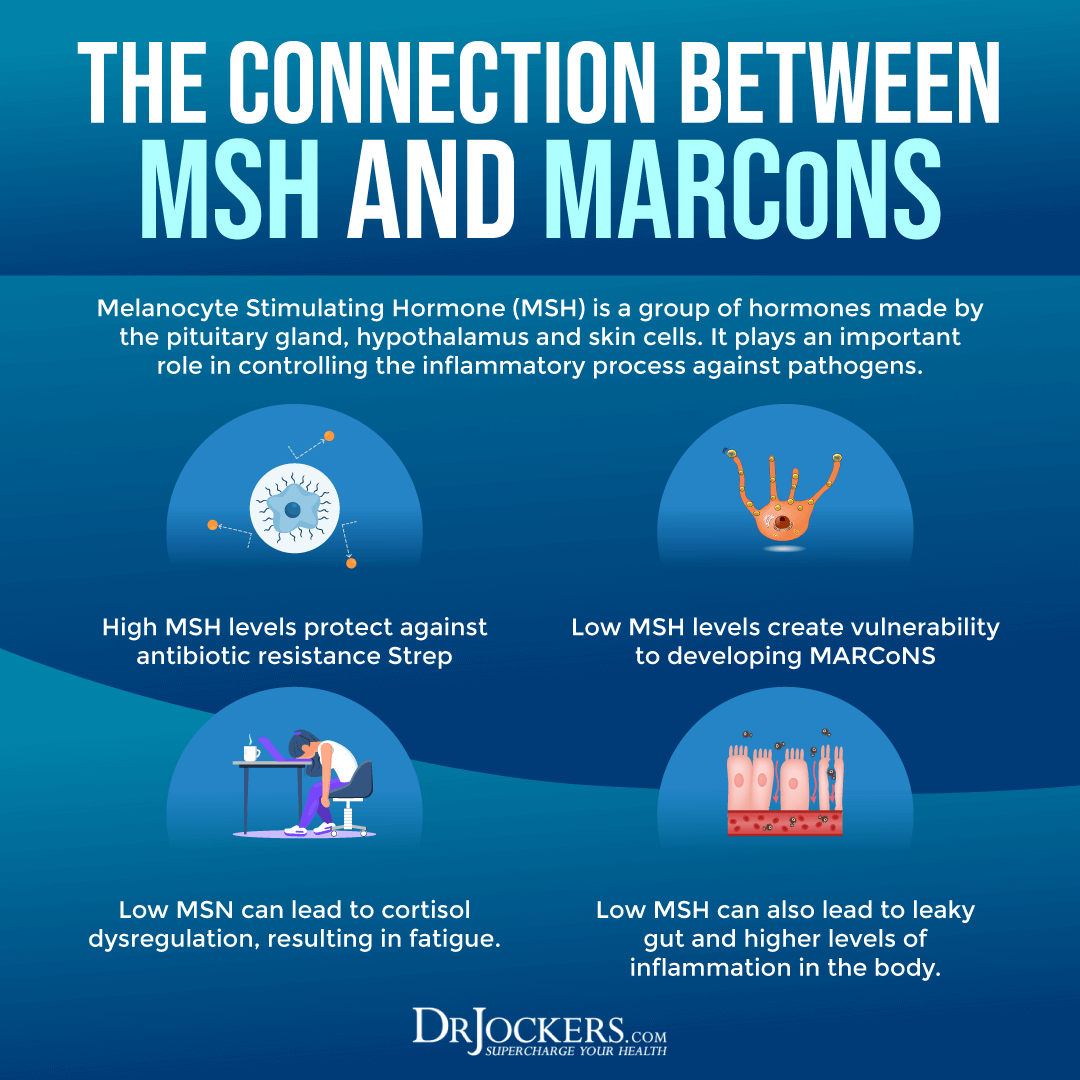
Lab Testing and Diagnosis
The first step to recovery is diagnosis. To look for MARCoNs, bacteria, fungal infections, and biofilms, I recommend this Nasal Swab. This is an incredibly simple test. With just one nasal swab, lab technicians can detect MARCoNs, other bacteria, fungi, and yeast from mold, and other pathogens. You can contact our health coaching team here if you are interested in getting this test.
For a positive MARCoNS analysis, they offer a biofilm analysis to get a complete picture of the issue. If you experience symptoms of a MARCoNS infection, I recommend this affordable and simple nasal swab test to aid in diagnosis and treatment.
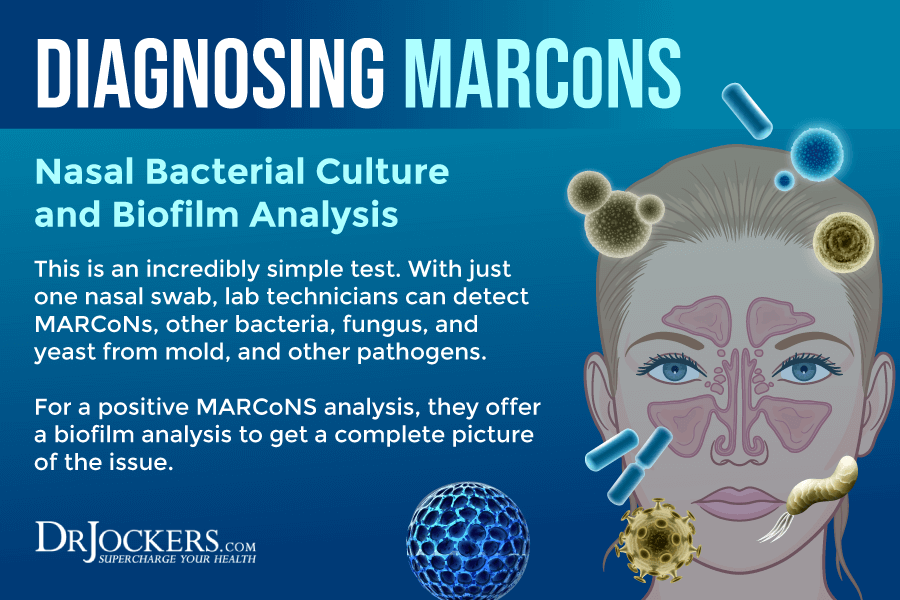
Blood Labs to Review
In addition to a nose swab for MARCoNS, fungal infections, and other pathogens, I recommend a number of blood labs to determine underlying risks and health factors. These labs are looking at specific immune markers associated with inflammation.
When the body is exposed to mold, mycotoxins, and MARCoNS, certain immune markers associated with the inflammatory process will be elevated. Here are some of the main ones that functional practitioners will consider as they analyze individuals dealing with mold toxicity, CIRS, and MARCoNS.
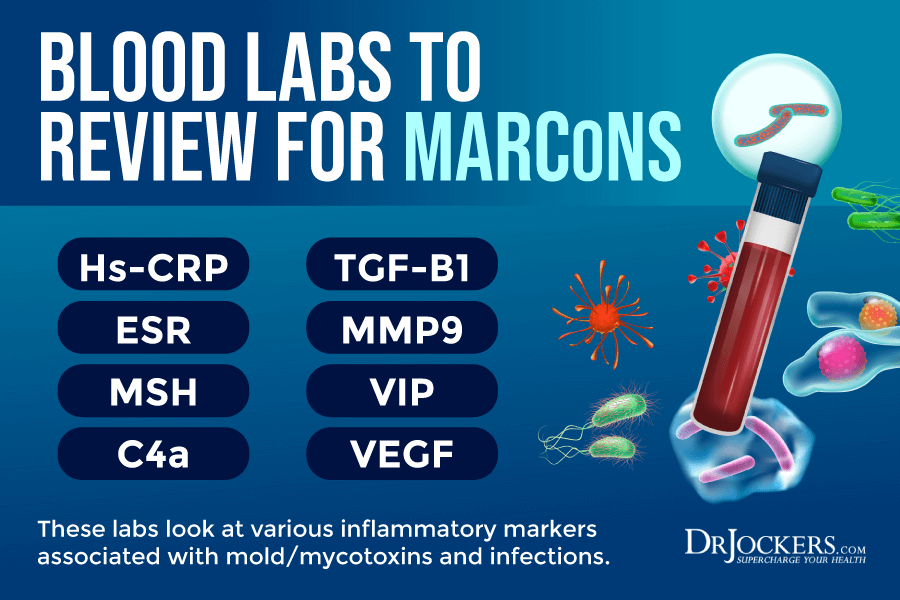
Hs-CRP
The C-Reactive Protein or CRP test is a key test I recommend. It measures a protein (CRP) produced in your liver that indicates inflammation levels in your body. The clinical range is between 0 and 3 mg/L, while the optimal range is 0 to 1 mg/L.
When I see levels over 1 mg/L, I know the individual has an inflammatory response that could be due to acute trauma or chronic conditions. High intensity exercise the day before or day of the lab test may also increase Hs-CRP levels. Ideally, we want to see the CRP levels as low as possible, certainly under 1 mg/L and more like .01 mg/L.
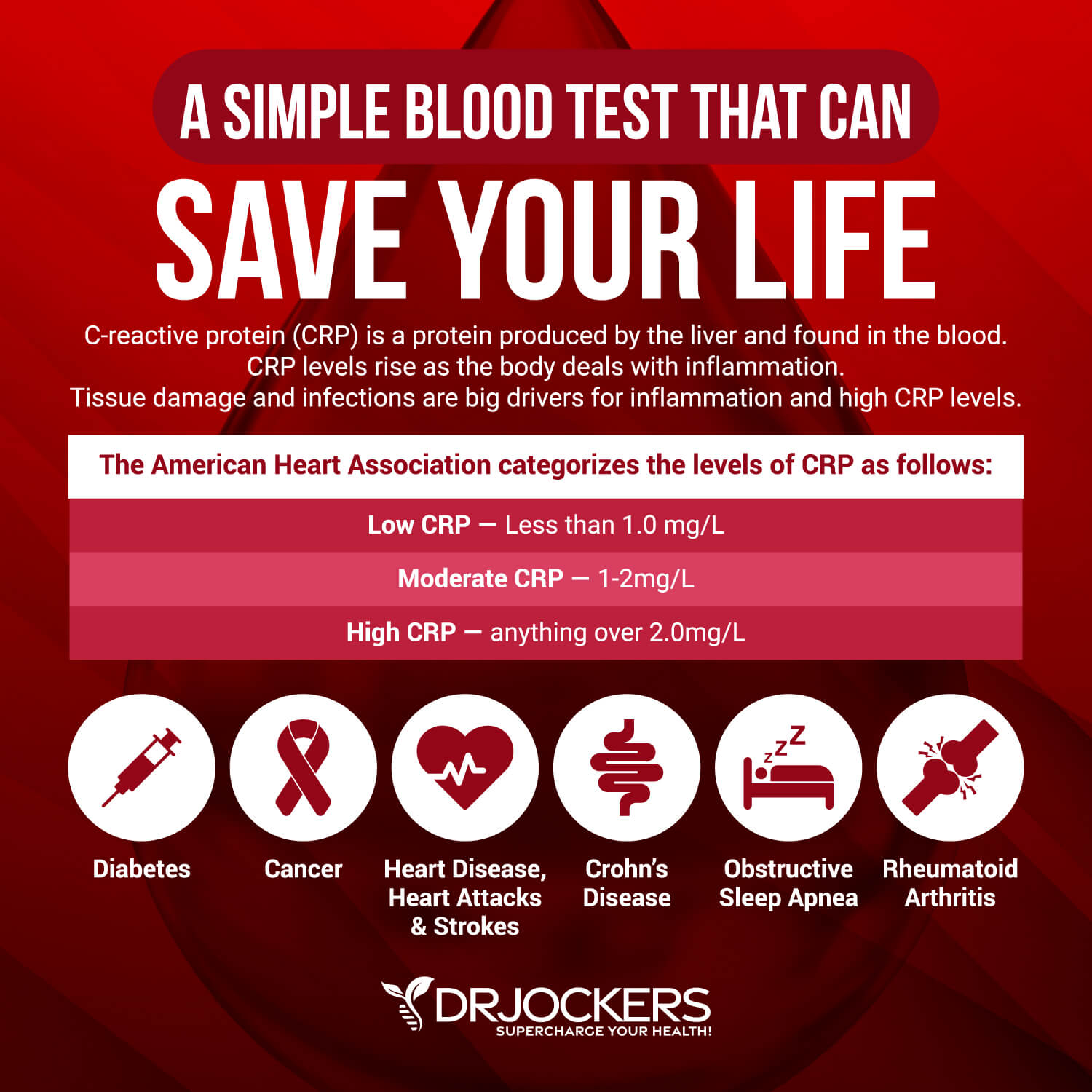
ESR
The erythrocyte sedimentation rate (ESR) is a common hematology test to look for inflammation. It refers to the rate at which your red blood cells in anticoagulated whole blood go down in a standardized tube over a period of one hour.
Anything over 20 mm/hr is a sign of significant inflammation and optimal results should be under 10 mm/hr. You can also look at platelets as a measurement tool of inflammation and the stickiness of blood. Platelets elevated above 250 is a sign of inflammation. The sweet spot for platelets is between 175 and 250. Below 175, immune function and blood clotting are compromised; the same is true for levels above 250.
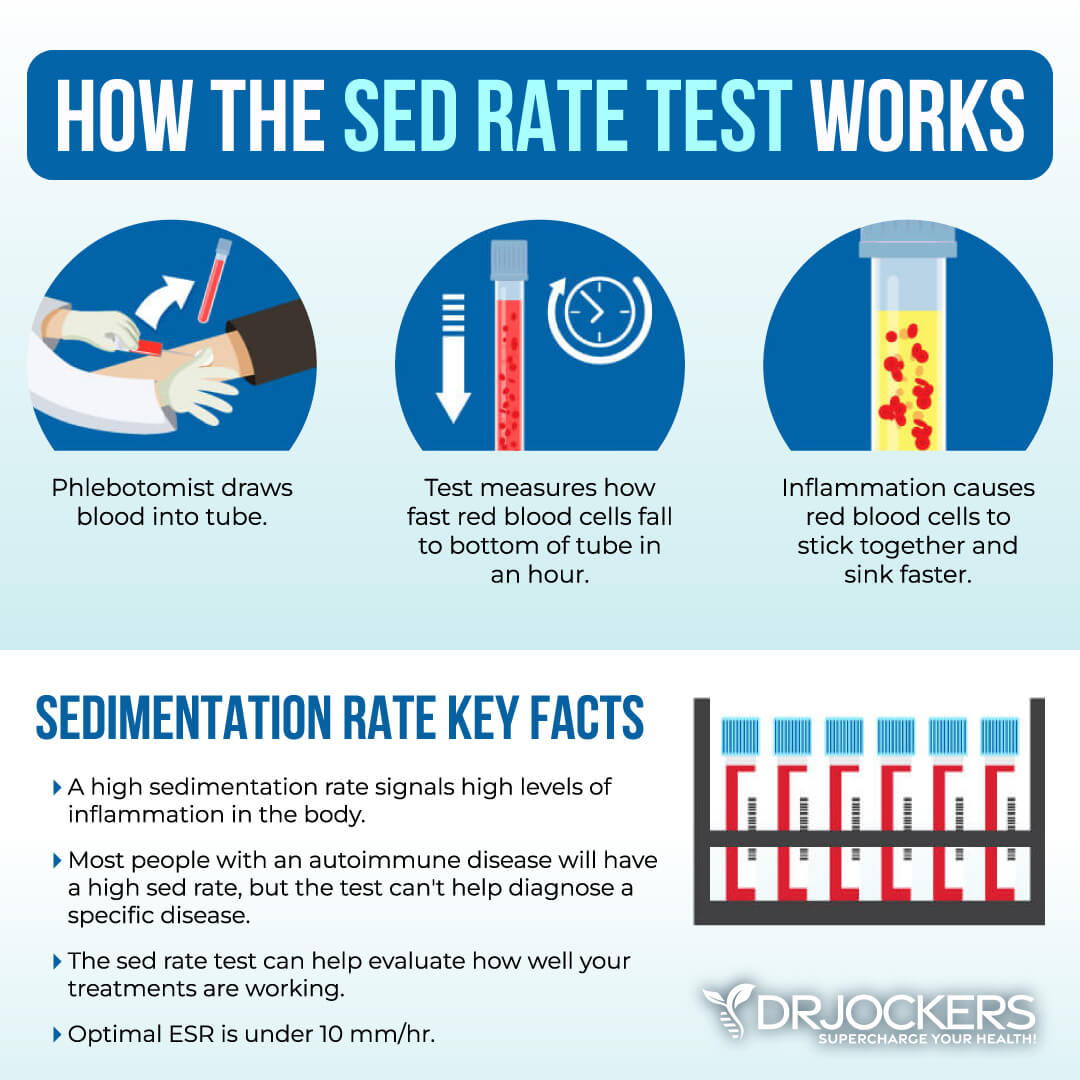
Plasma Zinc/Serum Copper
Checking your plasma zinc levels is the best way to determine zinc levels in your body. Ideal plasma zinc levels are between 9 and 20 μmol. Zinc and copper compete against each other as antagonists to regulate physiological pathways. A proper balance between the two is essential for maintaining good health.
I recommend checking your plasma zinc and serum copper levels and their balance. The proper zinc-copper ratio should be 1:8, the normal range for zinc is 150 – 240µg/gram, and the serum copper ratio should be between 1 and 1.2.
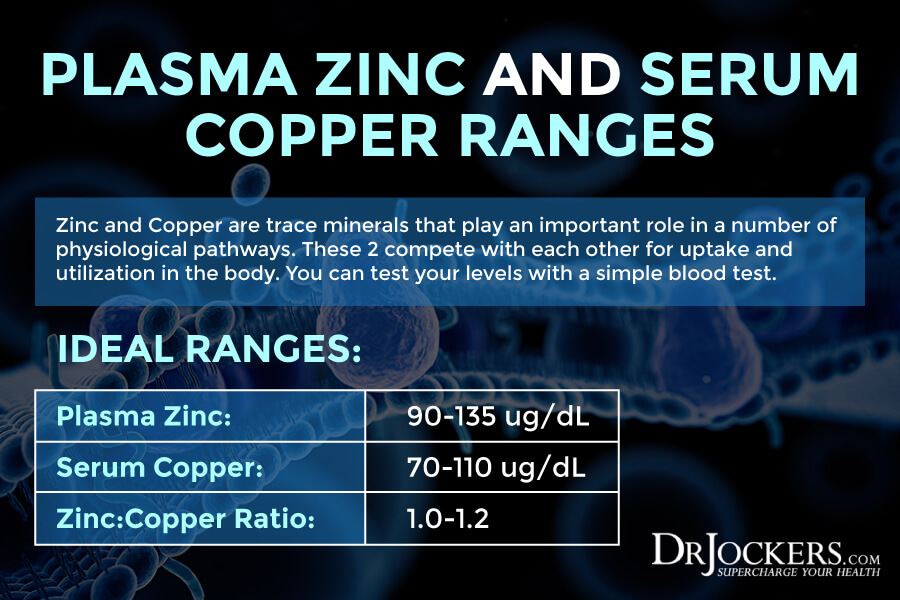
MSH
I also recommend checking for the regulation of melanocyte-stimulating hormone (MSH), which can be used as a marker for inflammation, pain, and sleep issues. MSH characterizes a group of hormones made by the pituitary gland, hypothalamus, and skin cells. It’s a powerful anti-inflammatory and helps to regulate inflammatory response.
A low MSH level is associated with low endorphins, which means an increase in pain. MSH is essential for preserving the skin from ultraviolet rays, the development of pigmentation, and controlling appetite.
Low MSH is caused by increased inflammation, triggered by cytokines reacting to biotoxins such as mold or bacterial/fungal/parasitic infections in the body. Those who suffer from biotoxin illnesses, such as chronic Lyme disease and mold exposure, are prone to inflammatory activity that lowers MSH. Normal levels are between 20 and 80 pg/ml. Low levels are commonly seen in chronic fatigue, chronic pain, chronic sleep issues, and pituitary dysfunction.
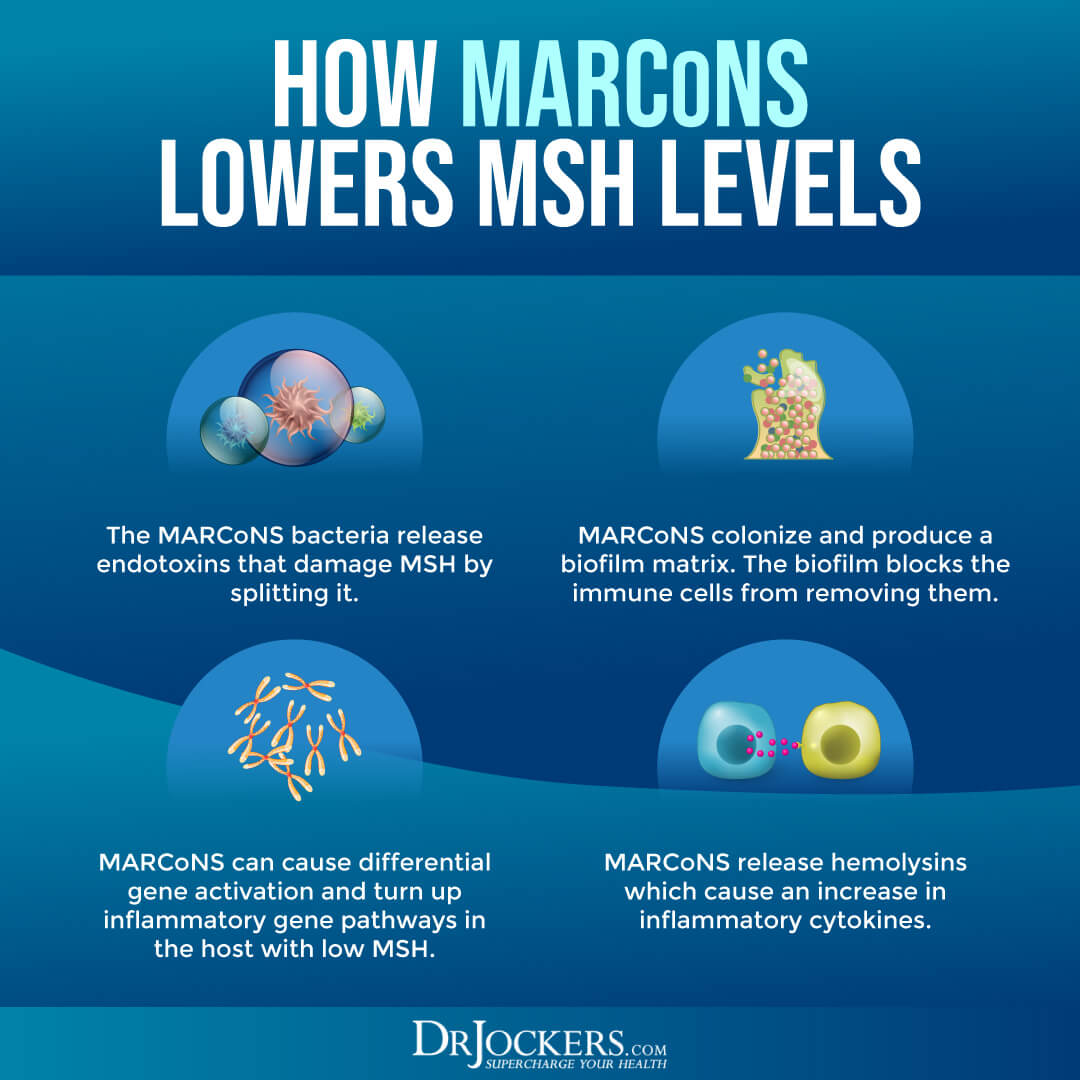
C4a
I also recommend checking your C4a levels. C4a is a small protein released by C4, upon activation of the complement system’s classical and lectin pathways, which are important constituents of the innate immune system response. Optimal levels are between 0 and 650 ng/mL.
High levels of C4a mean that your immune system is in overdrive and may indicate toxins or pathogenic overgrowth. According to many mold and CIRS experts, there is a range that can indicate certain issues.
A C4a level that is greater than 20,000 is a severe biotoxin illness and possibly high mVOC sensitivities. Ranges from 6000-9000 can be seen in chronic Lyme disease, with acute Lyme up to 17,000. Acute mold exposure can be between 14,000-16,000 with chronic mold around 12,000-14,000.
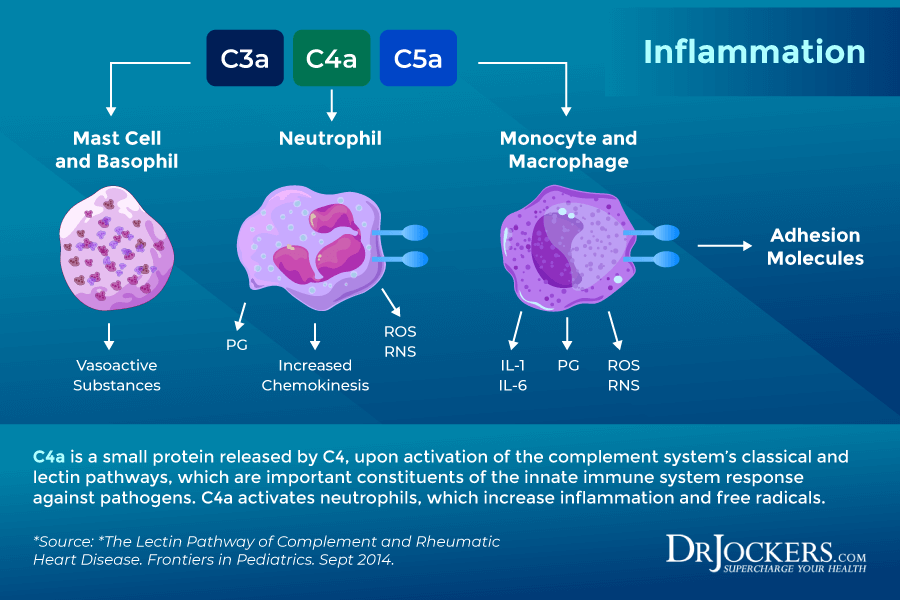
TGF-B1
Looking at your transforming growth factor-beta 1 (TGF-B1) levels may also be helpful. TGF-B1 is a polypeptide member of the TGF-beta superfamily of cytokines that play a role in cell growth, cell differentiation, cell proliferation, and cell death.
Research shows that TGF B-1 has a role in the activation of autoimmunity as well as suppressing autoimmunity. TGF-beta, together with IL-6 and IL-21, promotes Th17 cell development. Th17 cells have been identified as a lineage distinct from Th1 and Th2 cells, and are required for induction of several autoimmune diseases, including collagen-induced arthritis, experimental autoimmune encephalitis (EAE), and inflammatory bowel disease (IBD), and also for the ability to clear bacterial infections of the intestine and the airways.
Normal levels are between 344 and 2382 pg/mL. High levels mean high levels of inflammation and a disease state.

MMP9
I also recommend looking at your matrix metalloproteinase-9 (MMP-9) levels. MMPs play a role in inflammation and fibrosis in cardiovascular disease. MMP-9 is specifically connected to breaking down extracellular matrix proteins (ECM proteins) and triggering cytokines and chemokines for tissue remodeling.
Normal levels range between 85 and 332 ng/mL. High levels are seen in inflammation and cancer.
VIP
I also recommend looking at Vasoactive Intestinal Polypeptide. VIP is a neuroregulatory peptide made in the hypothalamus (suprachiasmatic nucleus). It works to help regulate blood flow, blood distribution and cytokine responses.
It also plays an important role in managing pulmonary artery pressures and helps the body make T regulatory cells. Low VIP levels lead to poor regulation of inflammation and chemical sensitivities. A symptom of low VIP is dyspnea, or trouble breathing, on exertion. Normal levels are 23-63 pg/ml
VEGF
Finally, I recommend looking at the vascular endothelial growth factor (VEGF). VEGF is a signal protein that supports blood vessel formation. It is considered the master regulator of angiogenesis during growth and development, as well as in disease states such as cancer, diabetes, and macular degeneration.
Normal levels of VEGF are 31-86 pg/ml. High levels may indicate cancer and may help to determine cancer survival chances.

Natural Support Strategies
If you are dealing with MARCoNS and related symptoms, I recommend the following natural support strategies to improve your health.
Reduce Mold and Mycotoxin Exposure
As I discussed earlier, mold is one of the major underlying culprits behind MARCoNS (6, 7, 15). A 2013 review published in Toxins (Basel) has found that mold and mycotoxins may lead to naso-sinus fungal biofilm contributing to various symptoms of chronic illness, including chronic fatigue (24). Reducing your mold exposure is critical for reducing your risks of MARCoNS and supporting your recovery.
I recommend checking your home for mold. Common places that mold may hide include your bathroom, kitchen, basement, behind wallpaper, and under old carpeting. If there is a mold issue in your home, call a mold remediation specialist for professional removal and other solutions. Address any underlying issues that can lead to mold, including too much humidity, moisture leaks, and old carpeting. Use a dehumidifier to reduce humidity and a high-quality air filtration system. To learn more about mold toxicity and what to do about it, I recommend reading this and this article.
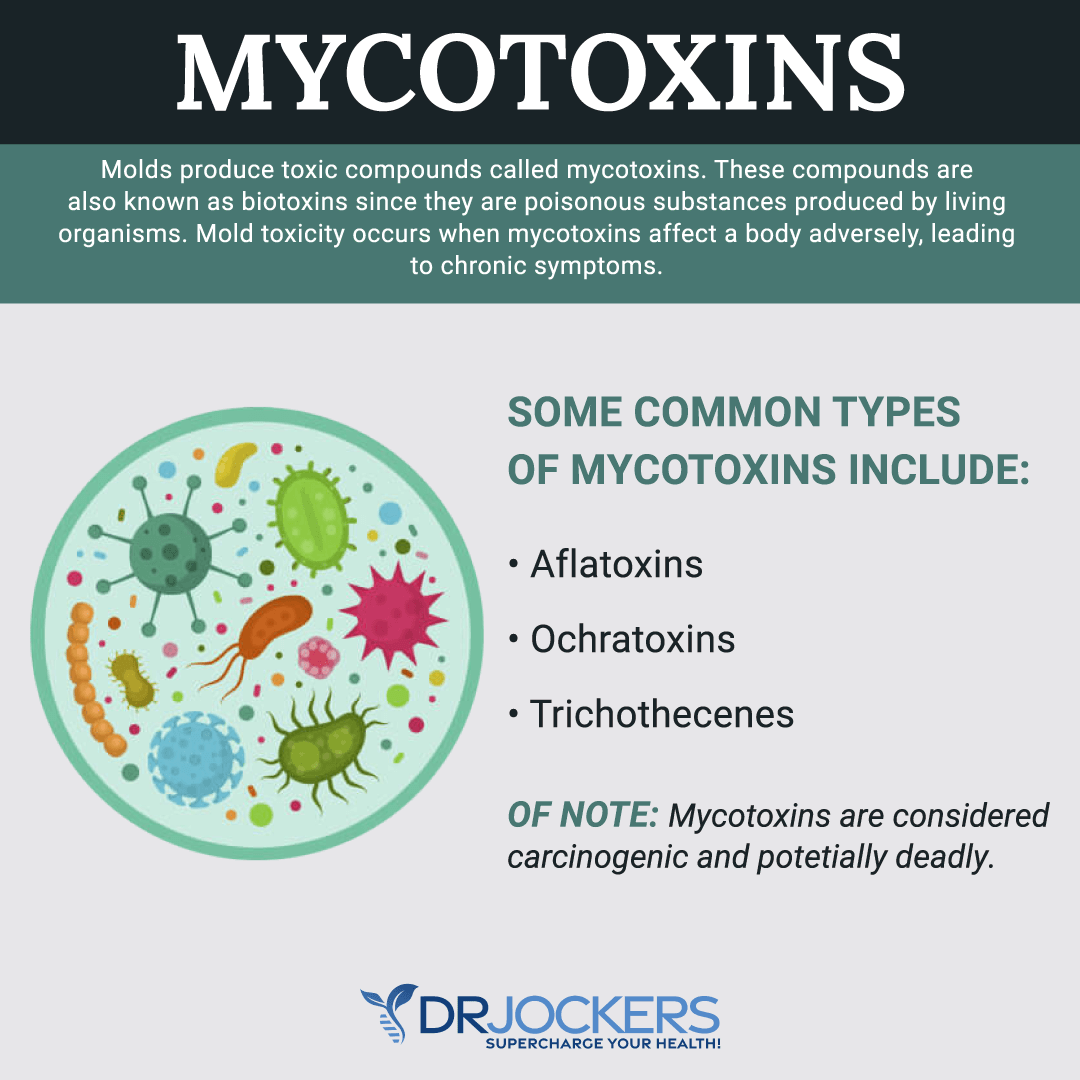
High-Quality Air Filtration
I recommend using a high-quality air filtration system that can remove mold spores and other toxins from your indoor air. I recommend using the Air Doctor. We have this system in our home and are incredibly satisfied with the fresh, clean indoor air we have, free of mold spores, allergens, and toxins.
How is this system different from other air filtration systems? Most air filters that you use in air filtration systems only remove air pollutants and particles before the air gets into the HVAC unit. The problem is that this also means that they can’t protect you from all air pollutants effectively.
Unlike other air filtration systems, the Air Doctor has multiple filtration levels within an air-tight system. It uses a dual-action Carbon/Gas Trap/VOC filter for odor and VOC control. The Clean Air Delivery Rate (CADR) of this system is 326, which is much higher than its competitors. It also. It removes all particulate matter at .003 microns.
It can remove all kinds of particles, including toxic ozone, organic chemicals, and gasses. It has a formaldehyde filter, auto-sensor, digital display, and sealed system. While competitors offer some of the same benefits, none that I was able to find offers all these perks. To learn more about the Air Doctor and the importance of clean indoor air, you can check out my review here.
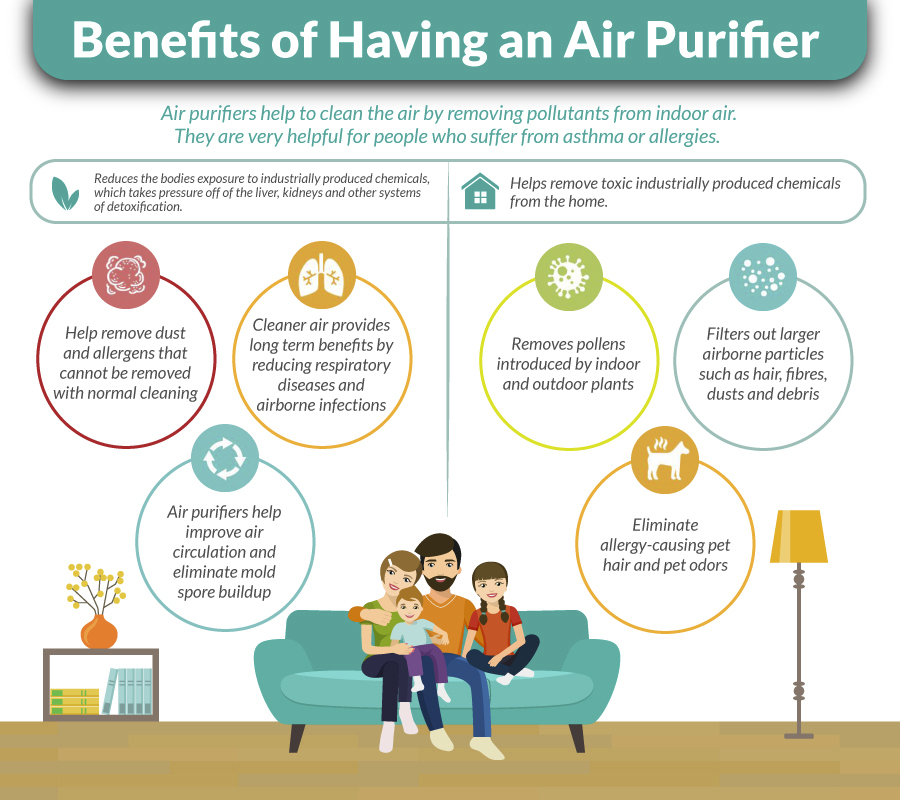
Anti-Inflammatory Low-Mold Nutrition Plan
Diet may be one of the major underlying factors behind MARCoNS (8, 9, 6, 7, 10, 11, 12). Your diet can increase inflammation, leaky gut syndrome, and bacterial overgrowth, and even be a source of mold, which may increase your symptoms and health issues. I recommend following an anti-inflammatory, low-mold nutrition plan.
Remove all inflammatory foods from your diet, including refined sugar, refined oils, deep-fried foods, artificial ingredients, junk food, and heavily processed foods. Avoid mushrooms, truffles, yeast, cheese, vinegar-containing foods, jarred jams, dried fruits, and packaged nuts, as they may contain mold.
Check your food for mold. If you notice mold on your food, instead of removing the moldy part, throw the entire food into your compost bucket or garbage. Sugar can feed fungal infections and inflammation and trigger your symptoms, thus, you should remove refined sugar and reduce your sugar intake.
I recommend reducing your sugar intake to 5 to 10 percent, and it should only come from low-glycemic index fruits and vegetables, not processed sugar and carbs. Focus on healthy fats, including avocado, olives, olive oil, coconut oil, butter, and ghee, and moderate amounts of animal protein.
Follow a diet rich in greens, vegetables, herbs, spices, low-glycemic index fruits, grass-fed beef, butter, and ghee, pasture-raised poultry and eggs, wild-caught fish and seafood, and wild game. You may learn more about the anti-inflammatory ketogenic diet I recommend here.
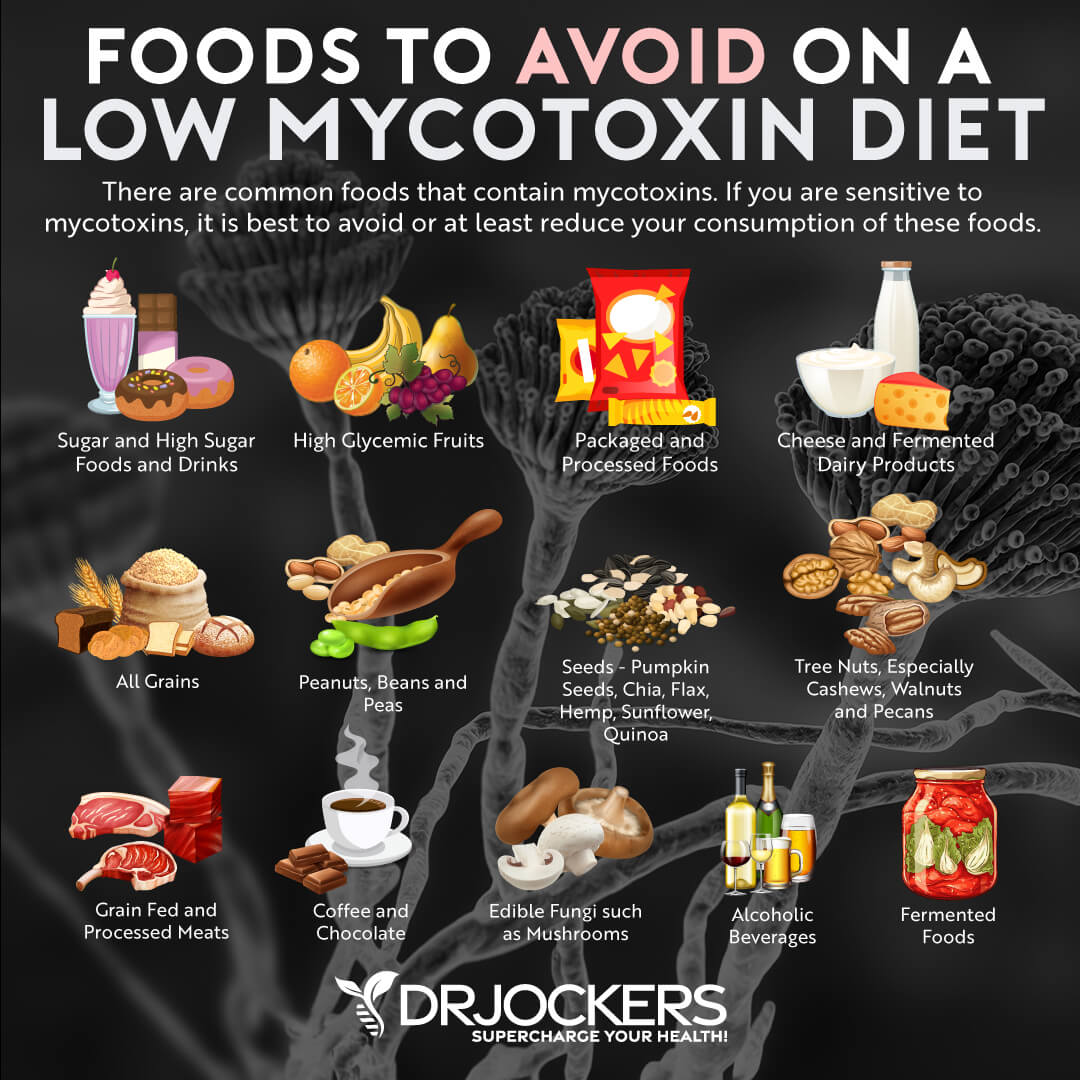
Nasal Spray
According to a 2019 review published in Current Allergy and Asthma Reports, staphylococcus bacteria can hide in your sinus cavity and lead to chronic sinus issues and nasal polyps (25). Using a nasal spray may help to reduce bacterial overgrowth, bacterial activity, symptoms, and health risks.
I recommend using the VIP Nasal Spray and BEG Nasal Spray. Vasoactive intestinal polypeptide (VIP) in VIP Nasal Spray helps to improve chronic inflammatory response syndrome (CIRS) due to mold. BEG Nasal Spray uses Bactroban (Mupirocin) 0.2%, Edetate Disodium (EDTA) 1%, and Gentamicin 0.5% to improve MARCoNS and symptoms due to mold exposure. These two nasal sprays for MARCoNS, however, both require a prescription.
To use a nasal spray protocol without a prescription is Xclear Natural Saline Nasal Spray and Nasomin Iodine. Xclear Natural Saline Nasal Spray is a simple saline solution with xylitol to relieve nasal symptoms. Nasomin Iodine is a rinse for clearing dust, pollen, and other air-borne environmental irritants we are exposed to every day as the first line of defense made with Purified water, Terrahydrite (Aqueous humic substances), and less than 1% mineral amino acid complexes. Insert the nozzle into the nostril and pump 2−3 times, then repeat for your other nostril. Remember to wipe the nozzle clean after each use. For sensitive individuals, simply reduce to 1 pump per nostril and increase as tolerated.
Open Drainage Pathways
Since MARCoNS are an overgrowth of antibiotic resistance bacteria and toxins and mold play a major role in its development, detoxification and opening up your drainage pathway are critical (1, 2, 6, 7, 13, 14, 15). I recommend opening up your drainage pathways to support detoxification, allow the removal of pathogenic overgrowth, reduce inflammation, and decrease symptoms.
Begin this process with lymphatic cleansing. I recommend dry brushing before showing every day to support lymphatic flow and circulation. Use a brush on your dry skin and brush your body towards your heart in circular motions to stimulate your lymphatic system. Regular movement and exercise are also great for your lymphatic system. To learn more about dry skin brushing, I recommend reading this article. To learn about lymphatic cleansing, check out this article.
Daily rebounding is another fantastic way to stimulate my lymphatic system within just a short 5 to 10-minute session. It is also great for cardio, energy, and a positive mood. Additionally, you may want to try healing baths and try lymph-supporting herbs, including Turkey Rhubarb, Sheep Sorrel, Burdock Root, Slippery Elm Bark, Astragalus Root, and Graviola Chuchuhuasi.
Additionally, support your drainage and elimination of toxins through urine, sweat, and bowel movement. Exercise and movement are a great way to support detoxification through sweating while supporting your circulation and reducing inflammation. I recommend a mix of resistance and strength training, such as weight lifting, resistance bands, bodyweight workouts, and kettlebells, cardio, such as biking, jogging, swimming, or hiking, and low-impact movements, such as yoga or pilates. High-intensity interval training (HIIT) is a fantastic way to combine strength training and cardio.
Infrared sauna is another fantastic option to improve detoxification through sweating and reduce inflammation and pain. You may also try red light therapy to reduce inflammation and pain. Learn more about it here. Hydrate your body well to support detoxification through sweating and urine. Try Epsom salt baths to reduce pain and inflammation. Learn more about Epsom salt baths here.
Support your gut flora and healthy elimination with high-quality probiotics. I recommend SBO Probiotics. Support your two major detoxifying organs, your kidneys and liver, and support their healthy functioning with kidney and liver support supplements, such as Liver Support and Plant-Based Kidney Health.
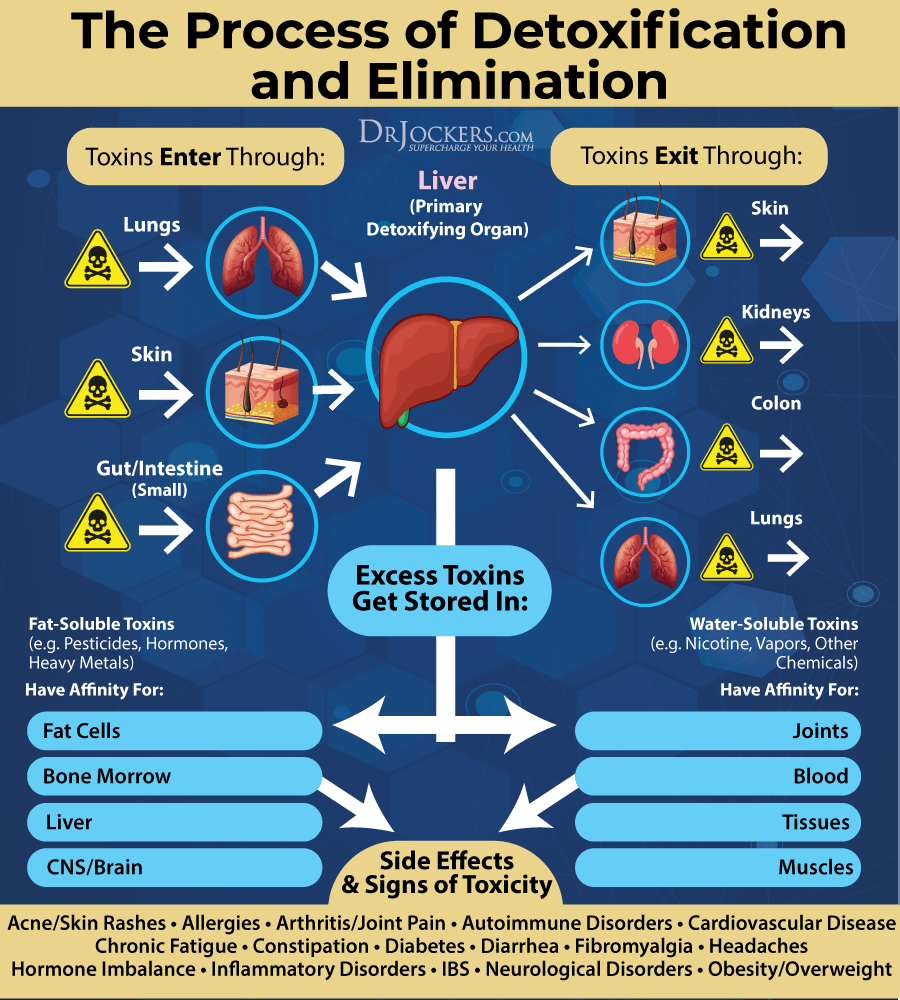
Use an Infrared Sauna
Infrared sauna therapy is a form of sauna that uses infrared heaters that release infrared lights you experience as heat as it gets absorbed through the surface of the skin. Infrared sauna therapy uses Far Infrared Technology (FIR), which is a non-invasive light therapy that can penetrate your body as much as three inches using FIR wavelengths between 5.6 and 20 microns.
Infrared sauna therapy heats your muscle tissues and internal organs without heating the surrounding air. This heat helps your organs and tissues to detoxify and pushes tissues to your bloodstream to eliminate perspiration or sweating. The infrared wavelengths of infrared sauna therapy are able to stimulate multiple pathways throughout the body.
According to a 2011 review published in Alternative Medicine Review, sauna therapy may be beneficial for reducing the risk of and improving autoimmune, cardiovascular, and other chronic health issues (26). Infrared sauna use may help to enhance liver detoxification, improve the immune system, kill pathogenic organisms, support metabolic pathways, stimulate metabolism, optimize kidney filtration, aid elimination, reduce stress, and enhance healthy weight loss.
If you are new to infrared sauna therapy, you can start with a short 5-minute session and build up over time to a 20-minute session or longer. Using it in the evening can help you sleep while using it in the morning can help you to start your day relaxed and rested. If you have time, you may fit two sauna sessions into your day.
There are also a few strategies you can try to enhance your benefits:
- Exercise before using your infrared sauna to start heating up your body, sweating, and detoxing. Rebounding is a great option for lymphatic and cardiovascular benefits.
- Take a shower before to heat up your body a bit and remove any external toxins.
- Try dry brushing before your sauna therapy session to stimulate your lymphatic system and remove dead skin cells.
- Use niacin (vitamin B3), which enhances toxin release, then exercise to kick-start your sweating process before your sauna therapy session.
- Take a toxin binder such as activated charcoal, zeolite, bentonite clay or fulvic acids after your session to help internal detoxification.
- Eat a nutrient-dense organic diet, lower toxic exposure, exercise, reduce stress, and make healthy lifestyle choices to support detoxification, cellular repair, and rejuvenation.
You may learn more about the benefits of infrared sauna therapy here.

Improve Liver/Bile Flow
Toxins and leaky gut syndrome and some of the main underlying issues behind MARCoNS (1, 2, 3, 4, 5, 6, 7, 13, 14, 15). Improving your liver health and bile flow is a major part of detoxification and supporting digestion. Your liver and your gallbladder are two important organs that are involved in the formation of bile.
Bile is a digestive secretion that helps emulsify fat in your body to support digestion and detoxification processes. Thus supporting your liver and bile flow is essential for detoxification and recovery from MARCoNS. I recommend Liver Support and Bile Flow Support.
Use Toxin Binders
Binders are various substances that ‘bind’ to toxins by either trapping them or attracting them through a negative charge in your body than helping them remove them through bowel movements. Binders are essential for removing toxins from your body and supporting your health, which is critical for recovery from MARCoNS (1, 2, 3, 4, 5, 6, 7, 13, 14, 15).
I recommend using BioToxin Binder for systemic infection and inflammation with bioactive carbons. Bioactive carbons, including fulvic and humic acid, are some of the best toxin binders. Bioactive carbons are organic compounds in humus, a part of the soil. It is the richest in decaying plants or animal matter. Bioactive carbons help to improve the soil and the health of plants. They are also incredibly rich in minerals and support detoxification from heavy metals and other organic compounds. This supplement is formulated specifically to support binding biotoxins like mold, ammonia, and aldehyde systemically. I recommend taking 2 capsules twice daily or as otherwise directed by a healthcare practitioner.
I recommend GI Detox™+ for gut detox and gut health. This supplement is a combination of nutrients formulated to provide broader activity than a single-ingredient product. Zeolite clay, activated charcoal, and silica are all binding agents with proven efficacy. The other nutrients in G.I. Detox™+ support healthy digestion and elimination. The full-spectrum binding of G.I. Detox™+ provides a simple solution for environmental and internally produced detoxification.
It supports healthy detoxification and full-body cleaning, reduces bloating and gas, helps the clearance of mold metabolites, supports mental clarity, and allows a more pleasant cleansing experience. I recommend 1 capsule on an empty stomach with a full glass of water or as directed by a healthcare professional, 1 hour apart from other medications and supplements.
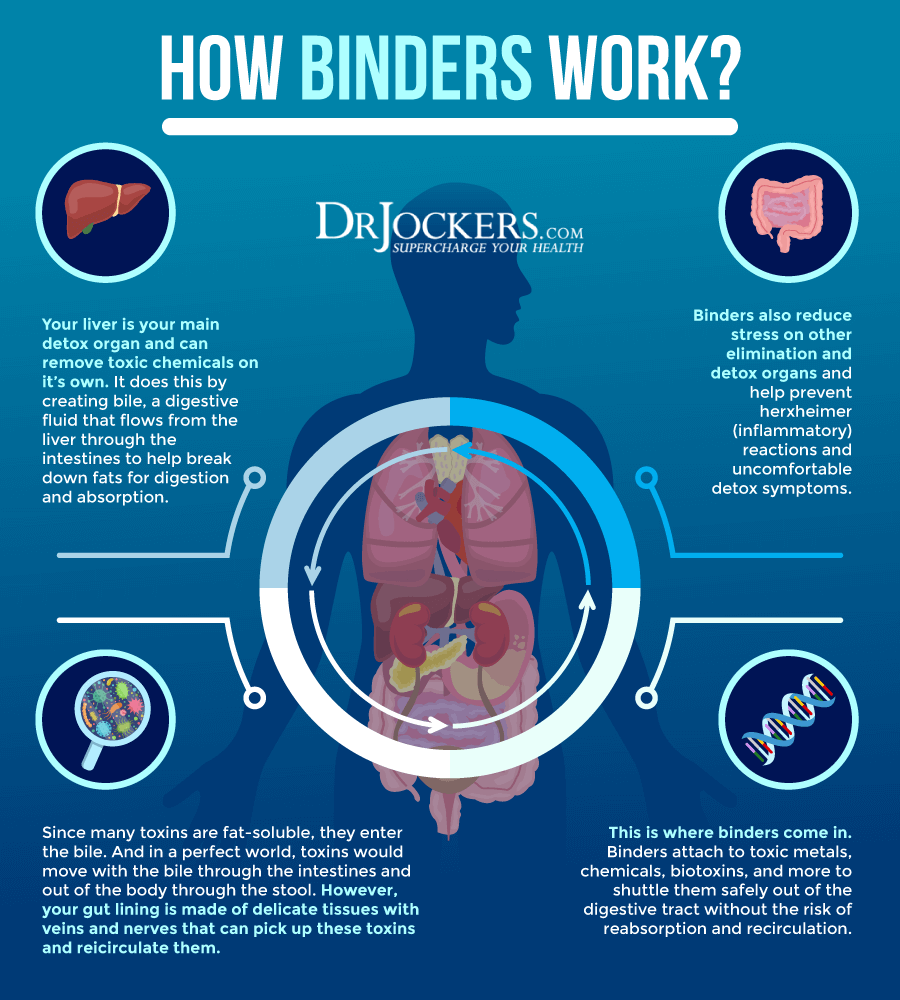
Final Thoughts
MARCoNS is an antibiotic-resistant form of staph that can lead to an infection, overgrowth, and chronic health issues. I recommend following my natural support strategies to improve your MARCoNS-related symptoms and your overall health.
If you want to work with a functional health coach, I recommend this article with tips on how to find a great coach. On our website, we offer long-distance functional health coaching programs. For further support with your health goals, just reach out—our fantastic coaches are here to support your journey.

Inflammation Crushing Ebundle
The Inflammation Crushing Ebundle is designed to help you improve your brain, liver, immune system and discover the healing strategies, foods and recipes to burn fat, reduce inflammation and Thrive in Life!
As a doctor of natural medicine, I have spent the past 20 years studying the best healing strategies and worked with hundreds of coaching clients, helping them overcome chronic health conditions and optimize their overall health.
In our Inflammation Crushing Ebundle, I have put together my very best strategies to reduce inflammation and optimize your healing potential. Take a look at what you will get inside these valuable guides below!
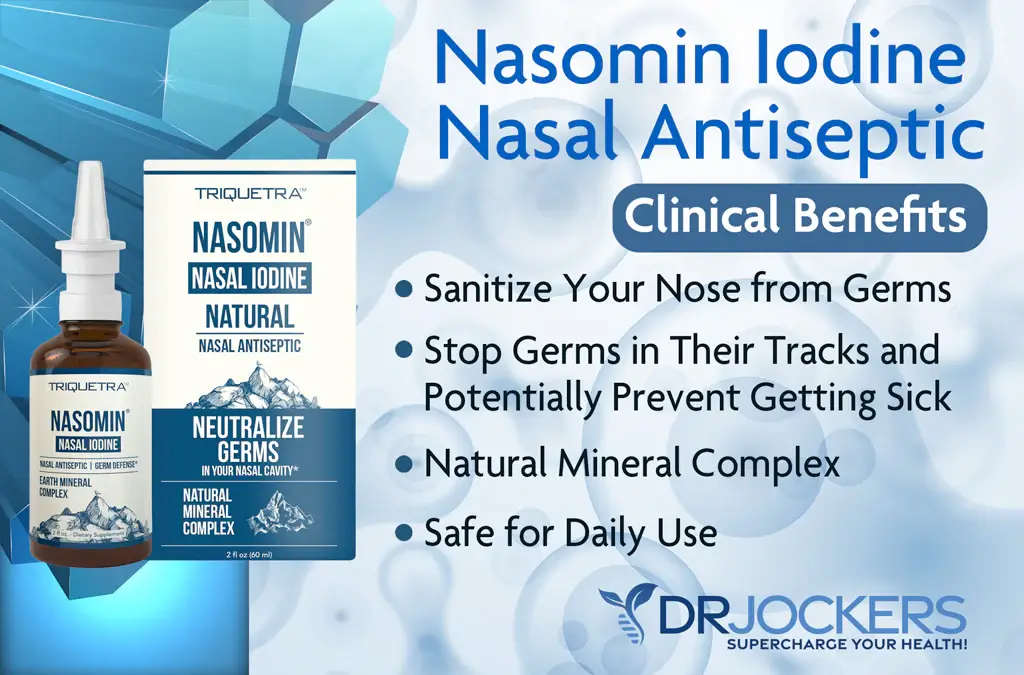


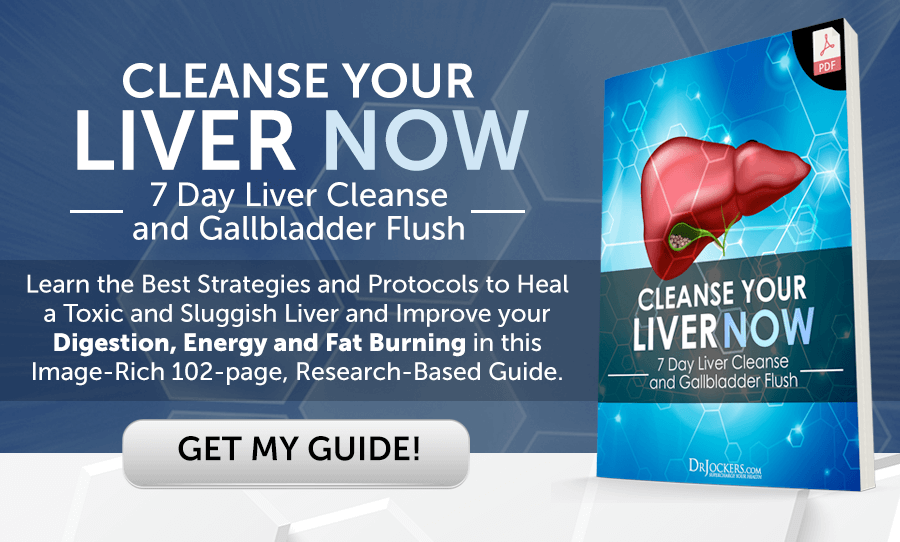


Thank you for your support, I appreciate you and need your help!